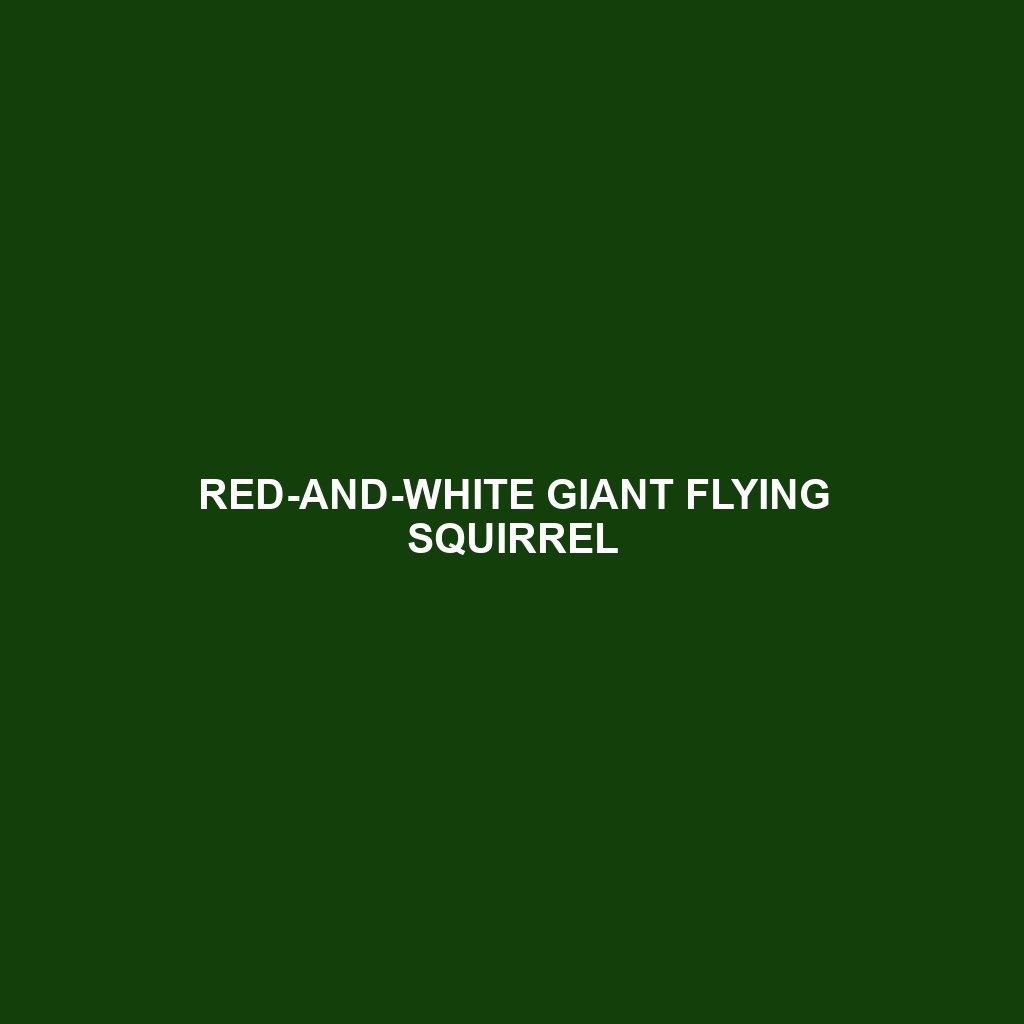Species Description: Red-and-white Giant Flying Squirrel
Common Name: Red-and-white Giant Flying Squirrel
Scientific Name: Petaurista alborufus
Habitat: The Red-and-white Giant Flying Squirrel primarily inhabits the tropical and subtropical forests of Southeast Asia, particularly found in countries like India, Myanmar, and parts of southern China. These habitats are characterized by dense canopies and high biodiversity, providing ample shelter and food resources.
Physical Characteristics: This remarkable species can grow up to 50 cm (20 inches) in body length, excluding its long, bushy tail. Its fur is a striking mix of bright red and white, with a distinctive white face and underbelly. The large, expressive eyes are adapted for low-light conditions, and the squirrel’s strong limbs allow it to glide efficiently between trees. These physical traits make the Red-and-white Giant Flying Squirrel highly recognizable and a subject of interest for wildlife enthusiasts.
Behavior: Known for its nocturnal habits, the Red-and-white Giant Flying Squirrel is most active at night. It is an agile glider, using a special membrane between its limbs to soar gracefully from tree to tree. Social structure varies, with some individuals living in small family groups while others may lead solitary lives. Its vocalizations, often described as chirps and whistles, play a significant role in communication among individuals.
Diet: The diet of the Red-and-white Giant Flying Squirrel primarily consists of fruits, nuts, seeds, and vegetation. It is particularly fond of soft, ripe fruits, which are abundant in its forest habitat. The consumption of leaves and flowers also forms a significant part of its feeding habits, making it an important seed disperser in its ecosystem.
Reproduction: Breeding typically occurs once a year during the wetter seasons, with female Red-and-white Giant Flying Squirrels giving birth to one or two offspring per litter. The young are weaned after approximately two months and begin to learn gliding skills shortly thereafter. Parental care is primarily carried out by the mother, ensuring the survival and development of the young.
Conservation Status: The Red-and-white Giant Flying Squirrel is currently classified as Vulnerable according to the IUCN Red List. Deforestation and habitat loss pose significant threats to its population, leading to ongoing conservation efforts aimed at protecting its natural habitat and ensuring its survival.
Interesting Facts: One of the most fascinating aspects of the Red-and-white Giant Flying Squirrel is its ability to glide distances of over 150 meters (about 490 feet). Additionally, these squirrels have been observed using their sharp claws to climb vertically in trees, showcasing their impressive physical adaptations.
Role in Ecosystem: As a significant seed disperser, the Red-and-white Giant Flying Squirrel plays a critical role in maintaining the health of forest ecosystems. By aiding in the growth of new plants and trees through its feeding habits, it contributes to forest regeneration and biodiversity. Moreover, it serves as prey for larger predators, thus forming an essential part of the food web.

